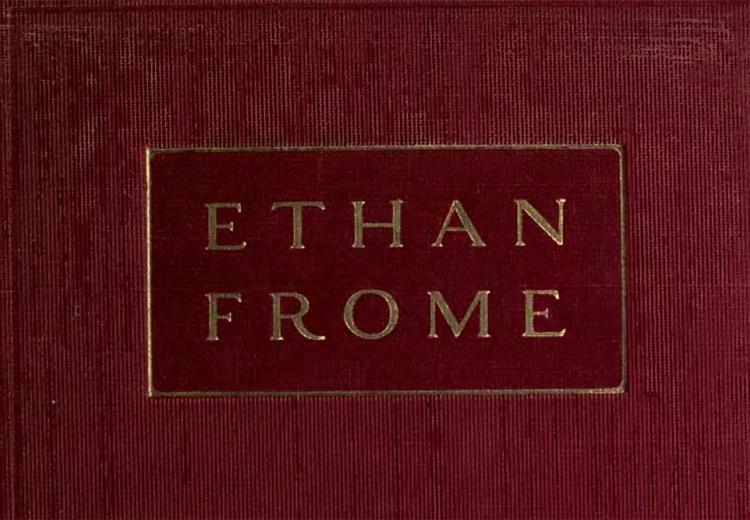Wharton's "Ethan Frome"

First edition of the novella Ethan Frome (1911) by Edith Wharton.
Edith Wharton's Ethan Frome
Edith Wharton published Ethan Frome in 1911; a full e-text is available below, alongside links that will allow you to learn more about Wharton's life and work.
Wharton wrote that she was responding to several popular writers of her time who wrote about New England. Writers like Sarah Orne Jewett and Mary Wilkins (Freeman) were often labeled "local color" writers for their detailed attention to specific regional characteristics in their work. Learn more about Wharton's comments about these writers and other thoughts on her creative process, and investigate how Ethan Frome adopts, and challenges, traditional elements from the local color tradition.
- Ethan Frome: Sources (PDF)
- Local color movement
Edwin Bjorkman suggested in a 1913 review of Ethan Frome that Ethan would not have even found happiness if he had married Mattie, but that the "curse lies in staying there, in breathing the crushing, choking atmosphere of Starkfieldian sterility." Examine this claim using the following "Close Reading" worksheet by comparing it against the words from Ethan Frome itself. The worksheet contains four pre-selected passages from Ethan Frome, each containing evidence for and/or against Bjorkman's claims. With his claims in mind, as well as Wharton's own professed reasons for writing the novel, analyze and annotate the passages using the strategies you learned about "close reading" earlier in class. Then, in the space provided, write 3-4 sentences using each passage to address the following question:
- "Close Reading" worksheet (PDF)
- Does the text portray Ethan as a victim of his social and physical environment, or of his own personal choices and temperament?
